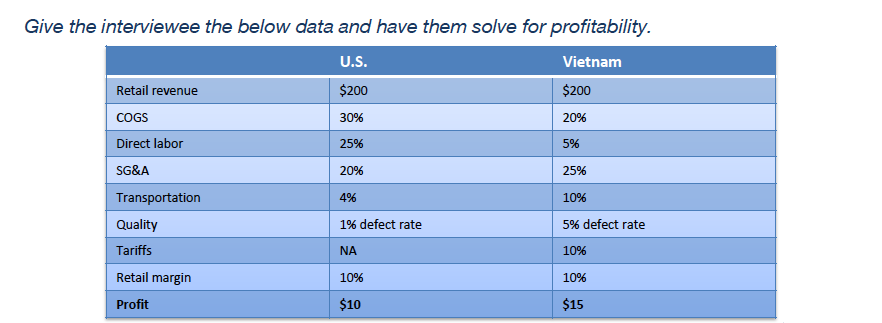Hi all, I ran into a math problem. This is a chart from a casebook that asks us to calculate the profits in two countries. How did it get $10 and $15? Thanks!

Hi all, I ran into a math problem. This is a chart from a casebook that asks us to calculate the profits in two countries. How did it get $10 and $15? Thanks!



Hi there,
I would be happy to share my thoughts on it:
If you would like a more detailed discussion on how to best prepare for your upcoming interviews, please don't hesitate to contact me directly.
Best,
Hagen



Hi,
Firstly, as Hagen mentioned, there might be other information in the case that may influence the final numbers - if we don't know that, its hard to comment.
Secondly, the quality of casebooks vary alot. Some are really good, some not so much. Sometimes, case authors also make mistakes/errors - I've seen and noticed a few before. It could be that this is the case here as well - where instead of a $ sign, it should be a % sign.
Hope this helps!

Hi there,
I agree with the other coaches. I tried this and got a different answer. However, critically, I would have to ask the interviewer how quality (defect rate), tariffs, and retail margin actually work. This affects the math!













